Use this nursing care plan and management guide to help care for patients with pulmonary tuberculosis. Enhance your understanding of nursing assessment, interventions, goals, and nursing diagnosis, all specifically tailored to address the unique needs of individuals facing pulmonary tuberculosis This guide equips you with the necessary information to provide effective and specialized care to patients dealing with pulmonary tuberculosis.
What is Pulmonary Tuberculosis?
Pulmonary tuberculosis (PTB) is an acute or chronic infection caused by Mycobacterium tuberculosis. PTB is characterized by pulmonary infiltrates, the formation of granulomas with caseation, fibrosis, and cavitation. The lungs are the most common site for the development of TB; 85% of clients diagnosed with TB present with pulmonary symptoms. In 2022, the United States reported 8,300 cases of tuberculosis (TB), a slight increase from the 7,874 cases reported in 2021. The incidence rate of TB also rose to 2.5 cases per 100,000 individuals in 2022. These figures indicate a return to pre-pandemic levels after a significant decline in 2020, which can be attributed to factors related to the COVID-19 pandemic, such as missed or delayed diagnoses (CDC, 2021).
Humans are the only known reservoir for M. tuberculosis. The organism is spread primarily as an airborne aerosol from an individual who is in the infectious stage of TB. People living in crowded and poorly ventilated conditions and who are immunocompromised are most likely to become infected. In the United States, the incidence is higher among the homeless, drug-addicted, and impoverished populations, as well as among immigrants from or visitors to countries in which TB is endemic. In addition, persons at the highest risk include those who may have been exposed to the bacillus in the past and those who are debilitated or have lowered immunity because of chronic conditions such as AIDS, cancer, advanced age, and malnutrition. When the immune system weakens, dormant TB organisms can reactivate and multiply.
Classic clinical features associated with active pulmonary TB include cough, weight loss or anorexia, fever, night sweats, hemoptysis, chest pain, and fatigue. Additionally, clients diagnosed with PTB have abnormal breath sounds, especially over the upper lobes or involved areas. Rales or bronchial breath signs may be noted, indicating lung consolidation (Herchline & Stuart, 2020).
When this latent infection develops into an active disease, it is known as reactivation TB, which is often drug resistant. Multidrug-resistant tuberculosis (MDR-TB) is also on the rise, especially in large cities, in those previously treated with antitubercular drugs, or in those who failed to follow or complete a drug regimen. It can progress from diagnosis to death in as little as 4–6 weeks. MDR tuberculosis can be primary or secondary. Primary is caused by person-to-person transmission of a drug-resistant organism; secondary is usually the result of nonadherence to therapy or inappropriate treatment.
Nursing Care Plans and Management
The nursing care plan goals and management for patients with tuberculosis include promoting adherence to the prescribed medication regimen to ensure effective treatment and prevent the spread of the infection, providing education on infection control measures and supporting the patient emotionally, and addressing any psychosocial needs.
Nursing Problem Priorities
The following are the nursing priorities for patients with tuberculosis include:
1. Adherence to the treatment medication regimen.
2. Decrease transmission of M. tuberculosis
3. Provide disease information and patient education
4. Provide emotional support and address psychosocial needs
5. Ensure a multidisciplinary approach to care, including coordinating follow-up appointments, arranging for directly observed therapy if needed, and facilitating ap
Nursing Assessment
Assess for the following subjective and objective data:
- Persistent cough lasting for several weeks or months
- Fatigue, weakness, and decreased energy levels
- Night sweats and unexplained weight loss
- Loss of appetite and decreased food intake
- Chest pain or discomfort
- Shortness of breath or difficulty breathing
- Crackles, wheezes, or decreased breath sounds
- Positive tuberculin skin test (Mantoux test) or interferon-gamma release assay (IGRA)
- Presence of infiltrates, nodules, or cavities in the chest X-ray
- Sputum smear or culture positive for Mycobacterium tuberculosis
- Elevated erythrocyte sedimentation rate (ESR) or C-reactive protein (CRP)
- Decreased oxygen saturation levels
- Signs of malnutrition or weight loss
Assess for factors related to the cause of tuberculosis:
- Inadequate primary defenses decreased ciliary action/stasis of secretions
- Tissue destruction/extension of infection
- Lowered resistance/suppressed inflammatory process
- Malnutrition
- Environmental exposure
- Insufficient knowledge to avoid exposure to pathogens
- Thick, viscous, or bloody secretions
- Fatigue, poor cough effort
- Tracheal/pharyngeal edema
- Decrease in effective lung surface, atelectasis
- Destruction of the alveolar-capillary membrane
- Thick, viscous secretions
- Bronchial edema
- Fatigue
- Frequent cough/sputum production; dyspnea
- Anorexia
- Insufficient financial resources
Nursing Diagnosis
Following a thorough assessment, a nursing diagnosis is formulated to specifically address the challenges associated with this condition based on the nurse’s clinical judgment and understanding of the patient’s unique health condition. While nursing diagnoses serve as a framework for organizing care, their usefulness may vary in different clinical situations. In real-life clinical settings, it is important to note that the use of specific nursing diagnostic labels may not be as prominent or commonly utilized as other components of the care plan. It is ultimately the nurse’s clinical expertise and judgment that shape the care plan to meet the unique needs of each patient, prioritizing their health concerns and priorities.
Nursing Goals
Goals and expected outcomes may include:
- The client will identify interventions to prevent/reduce the risk of the spread of infection.
- The client will demonstrate techniques/initiate lifestyle changes to promote a safe environment.
- The client will maintain a patent airway.
- The client will expectorate secretions without assistance.
- The client will demonstrate behaviors to improve/maintain airway clearance.
- The client will verbalize understanding of the therapeutic regimen and rationale for actions.
1. Initiating Measures for Infection Control & Management
Most people who develop tuberculosis do so after a long period of latency (usually several years after the initial primary infection). This is known as secondary tuberculosis. Secondary tuberculosis usually occurs because of the reactivation of latent tuberculosis infection. The lesions of secondary tuberculosis are in the lung apices. A smaller proportion of people who develop secondary tuberculosis do so after getting infected a second time (Adigun & Singh, 2022). The following are the assessments and nursing interventions for initiating measures for infection control and management:
1. Review pathology of disease (active and inactive phases; dissemination of infection through bronchi to adjacent tissues or via the bloodstream and/or lymphatic system) and potential spread of infection via airborne droplets during coughing, sneezing, spitting, talking, laughing, singing.
This helps the client realize or accept the necessity of adhering to a medication regimen to prevent reactivation or complications. Understanding how the disease is passed and awareness of transmission possibilities help the client and significant other (SO) take steps to prevent the infection of others. Pulmonary tuberculosis can be handled and controlled by giving information to clients to increase their self-efficacy. Increasing self-efficacy could improve the client’s awareness of their health behavior (Bahtiar, 2019).
2. Identify others at risk like household members, close associates, and friends.
Those exposed may require a course of drug therapy to prevent the spread or development of infection. In more advanced countries, high-burden tuberculosis is seen among recent arrivals from tuberculosis-endemic zones, healthcare workers, and HIV-positive individuals (Adigun & Singh, 2022).
3. Monitor temperature as indicated.
Febrile reactions are indicators of the continuing presence of infection. Fever has been reported to occur in 60 to 85% of clients afflicted with PTB. As a rule, every case of active PTB exhibits some degree of pyrexia which is one of the important signs of TB activity (Rosha, 2011).
4. Identify individual risk factors for reactivation of tuberculosis: lowered resistance associated with alcoholism, malnutrition, intestinal bypass surgery, use of immunosuppressive drugs, corticosteroids, presence of diabetes mellitus, cancer, and postpartum.
Knowledge about these factors helps the client alter their lifestyle and avoid or reduce the incidence of exacerbation. Latent TB is capable of being reactivated after immunosuppression in the host. A small proportion of people would develop an active disease following first exposure. Such cases are referred to as primary progressive tuberculosis. Primary progressive tuberculosis is seen in children, malnourished people, people with immunosuppression, and individuals on long-term steroid use (Adigun & Singh, 2022).
5. Monitor Liver function studies: AST/ALT.
Monitors adverse effects of drug therapy including hepatitis. A liver function test is required for all clients taking isoniazid. Other monitoring in TB includes monitoring for retinopathies for clients on ethambutol (Adigun & Singh, 2022).
6. Instruct the client to cough or sneeze and expectorate into tissue and to refrain from spitting. Review proper disposal of tissue and good hand washing techniques. Encourage return demonstration.
These behaviors are necessary to prevent the spread of infection. Lack of awareness is one cause of the lack of adherence to medication protocols and negative health behaviors, such as spitting and sneezing, in PTB clients (Bahtiar, 2019).
7. Encourage the client and family members to be active in TB infection control at home.
Clients with suspected or confirmed TB disease are more likely to have already transmitted TB infection to members of their household before their TB disease was diagnosed and treatment was started. Clients diagnosed with TB should be instructed to cover their mouth and nose when coughing or sneezing, sleep alone and not in a room with other household members, and refrain from having visitors in the home until they are non-infectious (Centers for Disease Control and Prevention, 2007).
8. Review the necessity of infection control measures. Put in temporary respiratory isolation if indicated.
This may help the client understand the need for protecting others while acknowledging the client’s sense of isolation and social stigma associated with communicable diseases. AFB can pass through standard masks; therefore, particulate respirators are required. Persons who have or are suspected of having infectious TB disease should be placed in an area away from other clients, preferably in an airborne infection isolation room. If a facility does not have this particular room, the client should be placed in a room that has been designated for isolation of persons with suspected or known infectious TB disease (Centers for Disease Control and Prevention, 2007).
9. Stress the importance of uninterrupted drug therapy. Evaluate the client’s potential for cooperation.
The contagious period may last only 2 to 3 days after initiation of chemotherapy, but in presence of cavitation or moderately advanced disease, the risk of spread of infection may continue for up to 3 months. Compliance with multidrug regimens for prolonged periods is difficult, so directly observed therapy (DOT) should be considered. The majority of clients with a diagnosis of TB have a good outcome. This is mainly because of effective treatment. Without treatment, the mortality rate for TB is more than 50% (Adigun & Singh, 2022).
10. Review the importance of follow-up and periodic reculturing of sputum for the duration of therapy.
These second-line drugs may be required when the infection is resistant to or intolerant of primary drugs or may be used concurrently with primary anti-tubercular drugs. MDR-TB requires a minimum of 18 to 24 months of therapy with at least three drugs in the regimen known to be effective against the specific infective organism and which the client has not previously taken. Treatment is often extended to 24 months in clients with severe symptoms or HIV infection.
11. Encourage selection and ingestion of well-balanced meals. Provide frequent small “snacks” in place of large meals as appropriate.
The presence of anorexia or preexisting malnutrition lowers resistance to infectious processes and impairs healing. Small snacks may enhance overall intake. A study found that the number of calories, food frequency per day, types of TB, and nutritional status during registration were found to be associated with recent nutritional status (Gurung et al., 2018).
12. Notify the local health department.
This is helpful in identifying contacts to reduce the spread of infection and is required by law. The treatment course is long and usually handled in the community with public health nurse monitoring. Health departments in the 50 US states and Dc report TB cases to the CDC based on the Council of State and Territorial Epidemiologists’ surveillance case definition, which includes both laboratory and clinically verified cases (Filardo, 2022).
13. Administer anti-infective agents as indicated.
Initial therapy of uncomplicated pulmonary disease usually includes four drugs, e.g., four primary drugs or a combination of primary and secondary drugs. 2020 LTBI guidelines include the NTCA- and CDC-recommended treatment regimens that comprise three preferred rifamycin-based regimens and two alternative monotherapy regimens with daily isoniazid (Adigun & Singh, 2022) (Adigun & Singh, 2022).
14. Administer Primary drugs: isoniazid (INH), ethambutol (Myambutol), rifampin (RMP/Rifadin), rifampin with isoniazid (Rifamate), pyrazinamide (PZA), streptomycin, rifapentine (Priftin) as indicated.
INH is usually the drug of choice for the infected client and those at risk for developing TB. Short-course chemotherapy, including INH, rifampin (for six months), PZA, and ethambutol or streptomycin, is given for at least two months (or until sensitivities are known or until serial sputum is clear) followed by three more months of therapy with INH. Ethambutol should be given if central nervous system (CNS) or disseminated disease is present or if INH resistance is suspected (Adigun & Singh, 2022). See Pharmacologic Management
15. Administer Second-line drugs: ethionamide (Trecator-SC), para-aminosalicylate (PAS), cycloserine (Seromycin), and capreomycin (Capastat) as indicated.
Extended therapy (up to 24 months) is indicated for reactivation cases, extrapulmonary reactivated TB, or in the presence of other medical problems, such as diabetes mellitus or silicosis. Prophylaxis with INH for 12 months should be considered in HIV-positive clients with positive PPD tests. See Pharmacologic Management
16. Administer bedaquiline (Sirturo) as ordered.
On December 28, 2012, the United States Food and Drug Administration Agency (FDA) approved Bedaquiline as a drug for treating MDR-TB. This is the first FDA approval for an anti-TB medication in 40 years. While showing remarkable promise in drug-resistant tuberculosis, cost remains a big obstacle to delivering this drug to the people most affected by MDR-TB (Adigun & Singh, 2022).
17. Educate the client and family members regarding BCG vaccination for children.
Vaccination drive in developing countries has played a bigger role in decreasing the prevalence of TB. The preventative effect of BCG vaccination is controversial but many studies have identified vaccination as a very important tool in the fight against tuberculosis, therefore, the focus should be kept on childhood vaccination, especially in developing countries (Adigun & Singh, 2022).
18. Ensure that the healthcare team is adherent to respiratory protection controls when handling the client.
Respiratory protection control consists of the use of personal protective equipment in situations that pose a high risk for exposure to TB disease. The use of respiratory protection can further reduce the risk of exposure of HCWs to droplet nuclei expelled into the air. These measures include implementing a respiratory protection program, training HCWs on respiratory protection, and educating clients on respiratory hygiene (Centers for Disease Control and Prevention, 2007).
2. Improving Effective Airway Clearance
Clients diagnosed with tuberculosis will experience an inflammatory process that causes individuals to experience an ineffective immune response disorder, causing symptoms such as cough with sputum or coughing up of blood, shortness of breath, chest pain, night sweats, and decreased appetite. Referring to these manifestations, a common nursing problem in TB clients is ineffective airway clearance. Ineffective airway clearance is the inability to clear secretions or blockages in the airways to maintain respiratory status. Airway obstruction is caused by the accumulation of sputum in the airways, resulting in inadequate ventilation (Selvia et al., 2022). The following are the assessments and nursing interventions for improving airway clearance:
1. Assess respiratory function noting breath sounds, rate, rhythm, depth, and use of accessory muscles.
Physical examination may reveal increased respiratory rate, irregular breathing rhythm, and additional breath sounds (Selvia et al., 2022). Diminished breath sounds may reflect atelectasis. Rhonchi, wheezes indicate accumulation of secretions and inability to clear airways that may lead to the use of accessory muscles and increased work of breathing.
2. Note the ability to expectorate mucus and cough effectively; document character, amount of sputum, and presence of hemoptysis.
Expectoration may be difficult when secretions are very thick as a result of infection and/or inadequate hydration. Blood-tinged or frankly bloody sputum results from tissue breakdown (cavitation) in the lungs or from bronchial ulceration and may require further evaluation or intervention.
3. Auscultate lung fields.
Decreased airflow occurs in areas consolidated with fluid or secretions. Bronchial breath sounds can also occur in consolidated areas. Crackles, rhonchi, and wheezes are heard upon inspiration and expiration in response to fluid accumulations, thick secretions, and airway obstruction.
4. Place the client in a semi or high-Fowler’s position. Assist the client with coughing and deep-breathing exercises.
Positioning helps maximize lung expansion and decreases respiratory effort. Maximal ventilation may open atelectatic areas and promote the movement of secretions into larger airways for expectoration. Sputum in the airway can be mobilized through coughing. A study evaluation showed that after effective physiotherapy and coughing, there was a change in breathing rhythm from irregular to regular on the second day of the afternoon session (Selvia et al., 2022).
5. Clear secretions from mouth and trachea; suction as necessary.
Suctioning prevents obstruction and aspiration. Suctioning may be necessary if the client is unable to expectorate secretions. Persons performing endotracheal suctioning on clients who have suspected or confirmed active tuberculosis should wear particulate respirators.
6. Maintain fluid intake of at least 2500 mL/day unless contraindicated.
High fluid intake helps thin secretions, making them easier to expectorate. Benefits from fluids are attributed to replacing increased insensible fluid loss from fever and from respiratory tract evaporation with tachypnea; correcting dehydration from reduced intake; reducing the viscosity of mucus; loosening nasal mucus; and moistening the respiratory tract to maintain comfort (Guppy et al., 2011).
7. Administer humidified inspired air and oxygen
This prevents the drying of mucous membranes and helps thin secretions. Humidifiers can reduce the risk of the respiratory passages being infected by mycobacterium tuberculosis, the origin of the disease.
8. Be prepared for/assist with emergency intubation.
Intubation may be necessary in rare cases of bronchogenic TB accompanied by laryngeal edema or acute pulmonary bleeding. The most common indication for tuberculosis-related ICU admission is acute respiratory failure due to pneumonia or ARDS. Clients with moderate to severe ARDS will need mechanical ventilation without any delay (Chaudry & Tyagi, 2021).
9 Prepare the client for chest physiotherapy.
One of the nursing interventions that can be applied to clear the sputum in the airway is chest physiotherapy. The role of nurses is needed to help reduce client complaints. Chest physiotherapy is a series of nursing actions consisting of percussing, vibration, drainage, deep breathing, and another cough exercise.
3. Promoting Effective Gas Exchange
Tuberculosis is an infectious disease that affects the lungs and results in poor lung compliance secondary to diffuse fibrotic changes to lung tissue. Consequently, people with pulmonary tuberculosis experience impaired gas exchange resulting in a decline in functional capacity, progressive dyspnea, and deconditioning (Sivaranjini et al., 2010). The following are the assessments and nursing interventions for promoting effective gas exchange:
1. Assess for dyspnea (using a 0–10 scale), tachypnea, abnormal or diminished breath sounds, increased respiratory effort, limited chest wall expansion, and fatigue.
Pulmonary TB can cause a wide range of effects in the lungs, ranging from a small patch of bronchopneumonia to diffuse intense inflammation, caseous necrosis, pleural effusion, and extensive fibrosis. Respiratory effects can range from mild dyspnea to profound respiratory distress. The use of a scale to evaluate dyspnea helps clarify the degree of difficulty and changes in condition.
2. Evaluate change in the level of mentation. Note cyanosis and/or change in skin color, including mucous membranes and nail beds.
Accumulation of secretions and/or airway compromise can impair the oxygenation of vital organs and tissues. Diaphoresis, pallor, and cool, clammy skin are late changes associated with severe hypoxemia. Subtle mental status changes may progress to coma over a period of days to weeks, especially if the client is also diagnosed with tuberculous meningitis (Herchline & Stuart, 2020).
3. Auscultate breath sounds.
Clients diagnosed with pulmonary TB have abnormal breath sounds, especially over the upper lobes or involved areas. Rales or bronchial breath signs may be noted, indicating lung consolidation (Herchline & Stuart, 2020).
4. Monitor heart rate and rhythm.
Tachycardia develops early because the sympathetic nervous system is stimulated, resulting in the release of catecholamines, epinephrine, and norepinephrine in an attempt to increase oxygen delivery to tissues.
5. Demonstrate and encourage pursed-lip breathing during exhalation, especially for patients with fibrosis or parenchymal destruction.
This creates resistance against outflowing air to prevent collapse or narrowing of the airways, thereby helping distribute air throughout the lungs and relieve or reduce shortness of breath. Pursed-lip breathing reduces the number of breaths the client takes and keeps the airways open longer. More air is able to flow in and out of the lungs, therefore, the client can be more physically active (American Lung Association, 2022).
6. Promote bedrest or limit activity and assist with self-care activities as necessary.
Reducing oxygen consumption and demand during periods of respiratory compromise may reduce the severity of symptoms. A study states that the reductions in lung volume and impaired gas exchange that people with TB infection experience lead to a decreased diffusion of oxygen at the blood-lung interface and contributes significantly to exercise-induced desaturation and symptoms of breathlessness. These symptoms might impact the ability of people with TB to function optimally in their daily lives (van Aswegen & Roos, 2017).
7. Encourage the client to perform a six-minute walk test as indicated.
The six-minute walk test (6MWT) is an example of a functional walk test that s practical and simple and only requires the ability to walk. Functional walk tests are typically administered as a means of evaluating the functional status, monitoring the effectiveness of treatment, and establishing prognosis (Sivaranjini et al., 2010).
8. Monitor serial ABGs and pulse oximetry.
Decreased oxygen content (PaO2) or saturation or increased PaCO2 indicates the need for intervention or change in the therapeutic regimen. ABG levels may be abnormal depending on the location, severity, and residual damage to the lungs.
9. Provide supplemental oxygen as appropriate.
This aids in correcting the hypoxemia that may occur secondary to decreased ventilation/diminished alveolar lung surface. Clients diagnosed with pulmonary TB sequelae have low oxygen venous pressure due to oxygen transport limitation, therefore decreasing SpO2 levels (Guessogo et al., 2016).
10. Administer corticosteroids as prescribed.
Corticosteroids are used as adjuvants, especially in extrapulmonary forms of the disease. Corticosteroids act by inhibiting the release of lymphokines and cytokines, which are responsible for constitutional symptoms and tissue damage. In general, corticosteroid use is considered for clients diagnosed with severe forms of PTB, usually for those who develop ARDS (Raina et al., 2013).
11. Provide or refer to pulmonary rehabilitation as indicated.
With a main focus on COPD, the American Thoracic Society/European Respiratory Society (ATS/ERS) rehabilitation guidelines indicate that rehabilitation is an effective intervention in chronic respiratory diseases. Preliminary data available suggested that pulmonary rehabilitation is effective in clients with a previous history of TB and with impaired lung function (Akkerman et al., 2020).
4. Promoting Optimal Nutritional Balance
In 2013, the World Health Organization (WHO) published the first guidelines on nutritional care and support specifically for clients diagnosed with TB. In these guidelines, the WHO stressed that all clients with active TB are entitled to individualize nutritional assessment and management, including counseling and therapy. The prevalence of malnutrition in clients with TB is calculated to be 70%, and in this population, malnutrition is associated with a two-fold higher risk of dying from TB (Akkerman et al., 2020). The following are the assessments and nursing interventions for promoting effective gas exchange:
1. Document the client’s nutritional status on admission, noting skin turgor, current weight and degree of weight loss, the integrity of oral mucosa, ability or inability to swallow, presence of bowel tones, and history of nausea and vomiting or diarrhea.
This is useful in defining the degree or extent of the problem and the appropriate choice of interventions. As low body mass index is a hallmark of chronic malnutrition that involves the loss of both fat and muscle tissue, a BMI <18.5 kg/m² may be used as a measure for general public health purposes (Akkerman et al., 2020).
2. Ascertain the client’s usual dietary pattern. Include in the selection of food.
This is helpful in identifying specific needs and strengths. Consideration of individual preferences may improve dietary intake. In a study, the TB client’s food intake was assessed by the frequency of meal consumption (1 to 2 meals or more than two meals per day), meal or food diversity, and meal reduced (amount of food intake per day), and receiving dietary care or counseling. It revealed that most clients did not have a high enough daily food intake (Musuenge et al., 2020).
3. Monitor I&O and weight periodically.
This is useful in measuring the effectiveness of nutritional and fluid support. Weight may be measured in kilograms to the nearest 0.1 kg using a digital standing scale, according to the standard examination procedures, which consists of clients standing in the center of the scale platform facing the recorders, looking straight ahead, and placing their hands at their sides. Clients’ shoes are removed to ensure the accuracy of the measures (Musuenge et al., 2020).
4. Investigate anorexia and nausea and vomiting, and note possible correlations to medications. Monitor frequency, volume, and consistency of stools.
This may affect dietary choices and identify areas for problem-solving to enhance the intake and utilization of nutrients. Clients both with TB and HIV tend to have clinical symptoms related to gastrointestinal disorders and weight loss. Another possible explanation is that HIV-infected clients have a poor appetite. Several studies conducted reported that TB and HIV infection both allow the sufferer to waste away, and worsen nutritional status (Musuenge et al., 2020).
5. Monitor laboratory studies: BUN, serum protein, prealbumin, and albumin.
Low values reflect malnutrition and indicate the need for intervention and change in the therapeutic regimen. Malnutrition is considered an important potentially reversible risk factor for TB treatment and failure. Clients with TB may suffer from malabsorption because of malnutrition, which can be increased by possible comorbidities such as diabetes and HIV/AIDS (Akkerman et al., 2020).
6. Encourage and provide frequent rest periods.
This helps conserve energy, especially when metabolic requirements are increased by fever. Regaining physical function shortens the time needed for recovery and enables the client to resume work. Disease-related malnutrition implies a decline in muscle function, which leads to dependency and less participation in society for the client (Akkerman et al., 2020).
7. Provide oral care before and after respiratory treatments.
This reduces the bad taste left from sputum or medications used for respiratory treatments that can stimulate the vomiting center. TB lesions of the oral cavity are uncommon and consequently are often overlooked in the differential diagnosis of oral lesions. Oral lesions are frequently described as stellate ulcers and may also vary with facial swelling, gingival enlargement, patches, and lesions of the jaws (Clough et al., 2018). Therefore, the nurse may provide a soft-bristled toothbrush and perform oral care thrice daily, especially after the expectoration of secretions.
8. Encourage small, frequent meals with foods high in protein and carbohydrates.
This maximizes nutrient intake without undue fatigue/energy expenditure from eating large meals and reduces gastric irritation. The treatment plan needs to be based on sufficient proteins and energy from either regular foods or medical nutritional supplements if necessary, preferably in combination with training (Akkerman et al., 2020).
9. Encourage SO to bring food from home and to share meals with the client unless contraindicated.
This creates a more normal social environment during mealtime and helps meet personal and cultural preferences. It is often better when a client with TB has the same diet as normal but possibly with some changes being made to increase their intake of food. Clients with TB often have a poor appetite initially, but having more frequent food intake can be helpful (Kanabus, 2022).
10. Promote foods that are rich in essential vitamins and proteins.
Proteins can be of animal origins like milk, eggs, meat, and fish, or of plant origin as in cereals and pulses. Attempts should be made to increase the energy and protein content in meals and snacks without increasing their volume. Vegetables, especially leafy vegetables, and fruits are vital sources of vitamins and minerals and should be a part of the daily diet (Kanabus, 2022).
11. Refer to a dietitian for adjustments in dietary composition.
This provides assistance in planning a diet with nutrients adequate to meet the client’s metabolic requirements, dietary preferences, and financial resources post-discharge. The nutritional counseling and measurements performed to assess malnutrition should be repeated regularly during the treatment and rehabilitation period as aided by a dietitian, to allow adjustment of the nutritional treatment plan if necessary (Akkerman et al., 2020).
12. Consult with a respiratory therapist to schedule treatments 1 to 2 hours before or after meals.
This may help reduce the incidence of nausea and vomiting associated with medications or the effects of respiratory treatments on a full stomach.
13. Administer antipyretics as appropriate.
Fever increases metabolic needs and therefore calorie consumption. Acetaminophen is one of the most widely used over-the-counter analgesic and antipyretic agents.
14. Provide information about available nutritional programs for TB clients.
Public health actions are needed to improve the quality of services and strengthen nutritional programs among adult TB clients. These may include the integration of food assistance in the TB National Program Strategic Plan; advocacy to Partners and the Ministry of Health to mobilize resources for food assistance; the development of guidelines for nutrition care and support to improve the quality of nutrition care; providing health education to improve awareness of undernutrition and its consequences for clients with TB and their family members (Musuenge et al., 2020).
5. Administering Medications and Pharmacological Support
The focus of pharmacological management of tuberculosis (TB) is to effectively treat the infection, eradicate the Mycobacterium tuberculosis bacteria, and prevent the development of drug resistance. This involves the use of a combination of antimycobacterial medications, often referred to as a multidrug regimen.
1. First-line antituberculosis drugs:
1.1. isoniazid (INH)
Isoniazid, the hydrazide of isonicotinic acid, is a bactericide that is effective against intracellular and extracellular organisms. This drug inhibits the synthesis of mycolic acids in the bacterial cell wall. The most frequent adverse effects associated with isoniazid treatment affect the nervous system and the liver, such as peripheral neuropathy and hepatitis.
1.2. rifampin (RMP/Rifadin)
Rifampin works by inhibiting the activity of RNA polymerase, an enzyme required for the synthesis of RNA in bacteria, including Mycobacterium tuberculosis. A common side effect of rifampin is the temporary discoloration (reddish-orange) of bodily fluids, such as urine, feces, saliva, sweat, and tears.
1.4. ethambutol (Myambutol)
Ethambutol is commonly used in combination with other drugs to form a multidrug regimen for TB treatment, helping to prevent the development of drug-resistant strains and promoting effective management of the infection. Ethambutol can cause visual impairment, particularly affecting the optic nerve.
1.3. pyrazinamide (PZA)
Pyrazinamide works by disrupting the energy metabolism of the bacteria, leading to their death. It is particularly effective against the dormant or non-replicating forms of the bacteria, which are often present in tuberculosis. Pyrazinamide is used in combination with other drugs as part of a multidrug regimen for TB treatment, helping to shorten the duration of therapy and prevent the development of drug-resistant strains. Regular monitoring of liver function is important, as pyrazinamide can occasionally cause liver toxicity.
1.6. rifabutin (RBT)
Rifabutin is often used as a substitute or in combination with other drugs in TB treatment, especially in cases where rifampin cannot be used due to drug interactions or resistance.
1.7. rifapentine (Priftin)
Rifapentine is primarily used in combination with other medications as part of a once-weekly regimen for the treatment of drug-susceptible pulmonary TB. Its long half-life allows for less frequent dosing, improving treatment adherence and convenience for patients.
1.8. Streptomycin
Streptomycin is an aminoglycoside antibiotic derived from Streptomyces griseus that is used in the treatment of TB and sensitive Gram-negative infections.
2. Administer Second-line drugs: ethionamide (Trecator-SC), para-aminosalicylate (PAS), cycloserine (Seromycin), and capreomycin (Capastat), bedaquiline (Sirturo)as indicated.
These are used when the first-line medications are not effective or not tolerated due to drug resistance or other factors. These medications are reserved for the treatment of drug-resistant tuberculosis (DR-TB) or when a patient experiences adverse reactions to the first-line drugs.
3. Mucolytic agents: acetylcysteine (Mucomyst)
These agents reduce the thickness and stickiness of pulmonary secretions to facilitate clearance. The goal of therapy is to prevent disease progression (Herchline & Stuart, 2020).
4. Bronchodilators: oxtriphylline (Choledyl), theophylline (Theo-Dur)
These agents increase the lumen size of the tracheobronchial tree, thus decreasing resistance to airflow and improving oxygen delivery. Bronchodilators are indicated for individuals that have a lower than optimal airflow through the lungs. The mainstay of treatment is beta-2 agonists that target the smooth muscles in the bronchioles of the lungs (Almadhoun & Sharma, 2022).
5. Corticosteroids (prednisone)
This may be useful in the presence of extensive involvement with profound hypoxemia and when the inflammatory response is life-threatening. Additionally, corticosteroids are commonly used in addition to anti-TB drugs for treating clients with exacerbations, such as tuberculous meningitis. These drugs help reduce inflammation of the surface of the brain and blood vessels and are thought to decrease pressure inside the brain (Prasad et al., 2016).
6. Providing Patient Education & Health Teachings
Patient education and health teachings for tuberculosis (TB) aims to promote understanding of the disease, ensure adherence to treatment, and prevent the spread of infection. Key aspects include explaining the importance of completing the full course of medication, potential side effects, and the need for regular follow-up appointments.
1. Assess the client’s ability to learn. Note the level of fear, concern, fatigue, participation level; best environment in which the client can learn; how much content; best media and language; who should be included.
Learning depends on emotional and physical readiness and is achieved at an individual pace. Self-efficacy is defined as the individual’s belief in their abilities, which is necessary for self-motivation. (Bahtiar, 2019)
2. Identify symptoms that should be reported to the healthcare provider: hemoptysis, chest pain, fever, difficulty breathing, hearing loss, and vertigo.
This may indicate the progression or reactivation of disease or side effects of medications, requiring further evaluation. Chest pain in clients with TB can also result from tuberculous acute pericarditis. TB may also affect any structure of the eye and typically presents as a blurry vision that may or may not be associated with pain and red eye (Herchline & Stuart, 2020).
3. Evaluate job- and environment-related risk factors.
Infected persons living in crowded or closed environments pose a particular risk to non-infected persons. Microepidemics have occurred in closed environments such as submarines and on transcontinental flights. Populations at high risk for acquiring the infection also include hospital employees, inner-city residents, nursing home residents, and prisoners (Herchline & Stuart, 2020).
4. Assess the client’s cultural, religious, or personal beliefs about health care.
Sometimes, cultural, religious, or personal beliefs affect a client’s TB care and treatment. This may include beliefs about how TB is transmitted, how TB is treated, and the significance the disease has for the affected person. Client beliefs about TB may differ from the medical model of TB treatment (Centers for Disease Control and Prevention, 2014).
5. Provide instruction and specific written information for the client to refer to the schedule for medications and follow-up sputum testing for documenting response to therapy.
Written information relieves the client of the burden of having to remember large amounts of information. Repetition strengthens learning. To be sure that the client has an accurate understanding of their TB disease and treatment, the nurse must ask the client to repeat back and explain what they understood. Culturally and linguistically appropriate client education materials can also be found on the CDC website and the Find TB Resources website (Centers for Disease Control and Prevention, 2014).
6. Use simple, nonmedical terms and appropriate language level when educating the client.
Do not use medical jargon and be specific about the behaviors that are expected by the client. Using words that are familiar to clients can make the information relevant to them. Written information should also match the client’s reading level. Persons with limited education may only be able to understand basic materials. Highly educated clients may prefer more details information. If the client does not read or write, the nurse should give instructions verbally and leave visual cues or reminders, such as pictures of the medication with the time of dosage written in large numbers (Centers for Disease Control and Prevention, 2014).
7. Avoid overwhelming the client with large amounts of information.
If too much information is given at one time, the client may not remember all of it. To avoid overwhelming the client, the topics discussed should be organized in order of importance. In the first session, the most essential topics should be discussed, in case the client does not return for follow-up care. People remember information presented at the beginning and at the end of a session more easily than they do the information presented in the middle (Centers for Disease Control and Prevention, 2014).
8. Provide interpreters, as available, for clients who do not speak the same language.
If the client and nurse do not speak the same language, it can be a barrier to successful care and treatment. TB programs should provide language assistance services, such as bilingual staff and interpreter services, at no cost to clients with limited English proficiency. Using family members as interpreters is strongly discouraged but do not exclude them if the client wants them to be part of the clinic visit (Centers for Disease Control and Prevention, 2014).
9. Incorporate the client’s beliefs in the treatment plan, as appropriate.
It is important to respect the client’s health beliefs while providing information about the rationale for medical TB treatment in a non-judgmental fashion. Healthcare workers and their organizations should strive to be culturally competent. Furthermore, while it is important to respect the client’s beliefs, it is just as important to clearly present the rationale for taking prescribed TB medication for a full course of treatment. For example, traditional or folk medicine can complement Western medicine but should be strictly overseen by the healthcare provider (Centers for Disease Control and Prevention, 2014).
10. Encourage the client and SO to verbalize fears and concerns. Answer questions factually. Note the prolonged use of denial.
This provides an opportunity to correct misconceptions and alleviate anxiety. Inadequate finances or prolonged denial may affect coping and managing the tasks necessary to regain health. Establishing rapport, trust, and good communication with the client is critical. Additionally, the healthcare worker must keep in mind that judgments about the client’s lifestyle, beliefs, and behavior may be conveyed through nonverbal body language. This can negatively affect the healthcare worker’s relationship with the client (Centers for Disease Control and Prevention, 2014).
11. Encourage the family members or caregivers to support the client.
The support of family, friends, and others can be important to clients trying to complete treatment. Some health departments may use former TB clients as peer workers to support clients currently going through Tb treatment. The nurse should ask the client to identify persons who support their TB treatment and can help them remember to take their medications or keep their DOT appointments (Centers for Disease Control and Prevention, 2014).
12. Emphasize the importance of maintaining a high-protein and carbohydrate diet and adequate fluid intake.
Meeting metabolic needs helps minimize fatigue and promote recovery. Fluids aid in liquefying or expectorating secretions. Studies show that subjects who receive food supplements during TB treatment tend to gain more weight compared with those not receiving food supplements. Carbohydrates and some fat are converted to energy, while protein and some fat are used to make structural and functional components of human tissue (World Health Organization, 2013).
13. Introduce the Directly Observed Therapy (DOT) strategy to the client and how it works.
DOT is the most effective strategy for ensuring clients take their medicine correctly. It is recommended as a standard worldwide. DOT means that a healthcare worker or other designated individual watches the client swallow every dose of prescribed drugs. DOT can reduce the development of drug resistance, treatment failure, or relapse after the end of treatment (Centers for Disease Control and Prevention, 2014).
14. Explain medication dosage, frequency of administration, expected action, and the reason for the long treatment period. Review potential interactions with other drugs and substances.
This enhances cooperation with the therapeutic regimen and may prevent the client from discontinuing medication before a cure is truly affected. Directly observed therapy (DOT) is the treatment of choice when the client is unable or unwilling to take medications as prescribed. The nurse may also explain that some people have trouble staying on a medication schedule. Clients are more likely to be adherent if they help make the decisions and choose solutions rather than being told what to do (Centers for Disease Control and Prevention, 2014).
15. Review potential side effects of treatment (dryness of mouth, constipation, visual disturbances, headache, orthostatic hypertension) and problem-solve solutions.
This may prevent or reduce discomfort associated with therapy and enhance cooperation with the regimen. The client may not fully understand the treatment regimen, how to take their drugs or the reasons for the long duration of the TB treatment. This lack of knowledge can lead to an inability or lack of motivation to complete treatment (Centers for Disease Control and Prevention, 2014).
16. Stress the need to abstain from alcohol while on INH.
A combination of INH and alcohol has been linked with an increased incidence of hepatitis. Regular monitoring of hepatic and renal function during treatment is necessary if the client has abnormal baseline levels or is at increased risk for hepatotoxicity (O’Connor & Brady, 2022).
17. Refer to an eye examination after starting and then monthly while taking ethambutol.
The major side effect is reduced visual acuity; the initial sign may be decreased ability to perceive green. Adverse effects of ethambutol include optic neuritis, which is usually reversible with the discontinuation of the drug. During the period when the client is on a daily dose of 25 mg/kg, monthly eye exams are recommended (Herchline & Stuart, 2020).
18. Encourage abstaining from smoking.
Although smoking does not stimulate the recurrence of TB, it does increase the likelihood of respiratory dysfunction or bronchitis. Smoking increases the risk of contracting TB, increases the risk of recurrent TB, and impairs the response to treatment of the disease. Additionally, recent studies have shown that second-hand smoke increases the risk of contracting the disease, especially in children (World Health Organization, 2018).
19. Review how TB is transmitted (primarily by inhalation of airborne organisms, but may also spread through stools or urine if the infection is present in these systems) and hazards of reactivation.
Knowledge may reduce the risk of transmission/reactivation. Complications associated with reactivation include cavitation, abscess formation, destructive emphysema, spontaneous pneumothorax, diffuse interstitial fibrosis, serous effusion, empyema, bronchiectasis, hemoptysis, GI ulceration, bronchopleural fistula, tuberculous laryngitis, and miliary spread. Because of the ability of M. tuberculosis to survive and proliferate within mononuclear phagocytes, they are also able to invade local lymph nodes and spread to extrapulmonary sites, such as the bone marrow, liver, spleen, kidneys, bones, and brain (Herchline & Stuart, 2020).
20. Create an adherence agreement with the client.
For some clients, a formal adherence agreement may be useful. An adherence agreement is a written understanding between the healthcare worker and the client. If many barriers are identified, it may be appropriate to have an adherence agreement at the very beginning of the treatment. The client should write down the activities they agree to carry out, in return for specific services, activities, or incentives from the healthcare worker. The healthcare worker should review the agreement with the client periodically to assess how well both are doing and make changes as needed (Centers for Disease Control and Prevention, 2014).
Recommended Resources
Recommended nursing diagnosis and nursing care plan books and resources.
Disclosure: Included below are affiliate links from Amazon at no additional cost from you. We may earn a small commission from your purchase. For more information, check out our privacy policy.
Ackley and Ladwig’s Nursing Diagnosis Handbook: An Evidence-Based Guide to Planning Care
We love this book because of its evidence-based approach to nursing interventions. This care plan handbook uses an easy, three-step system to guide you through client assessment, nursing diagnosis, and care planning. Includes step-by-step instructions showing how to implement care and evaluate outcomes, and help you build skills in diagnostic reasoning and critical thinking.

Nursing Care Plans – Nursing Diagnosis & Intervention (10th Edition)
Includes over two hundred care plans that reflect the most recent evidence-based guidelines. New to this edition are ICNP diagnoses, care plans on LGBTQ health issues, and on electrolytes and acid-base balance.

Nurse’s Pocket Guide: Diagnoses, Prioritized Interventions, and Rationales
Quick-reference tool includes all you need to identify the correct diagnoses for efficient patient care planning. The sixteenth edition includes the most recent nursing diagnoses and interventions and an alphabetized listing of nursing diagnoses covering more than 400 disorders.

Nursing Diagnosis Manual: Planning, Individualizing, and Documenting Client Care
Identify interventions to plan, individualize, and document care for more than 800 diseases and disorders. Only in the Nursing Diagnosis Manual will you find for each diagnosis subjectively and objectively – sample clinical applications, prioritized action/interventions with rationales – a documentation section, and much more!

All-in-One Nursing Care Planning Resource – E-Book: Medical-Surgical, Pediatric, Maternity, and Psychiatric-Mental Health
Includes over 100 care plans for medical-surgical, maternity/OB, pediatrics, and psychiatric and mental health. Interprofessional “patient problems” focus familiarizes you with how to speak to patients.

See Also
Other recommended site resources for this nursing care plan:
- Nursing Care Plans (NCP): Ultimate Guide and Database MUST READ!
Over 150+ nursing care plans for different diseases and conditions. Includes our easy-to-follow guide on how to create nursing care plans from scratch. - Nursing Diagnosis Guide and List: All You Need to Know to Master Diagnosing
Our comprehensive guide on how to create and write diagnostic labels. Includes detailed nursing care plan guides for common nursing diagnostic labels.
Other nursing care plans related to respiratory system disorders:
- Asthma
- Aspiration Risk & Aspiration Pneumonia
- Airway Clearance Therapy & Coughing
- Bronchiolitis
- Bronchopulmonary Dysplasia (BPD)
- Chronic Obstructive Pulmonary Disease (COPD)
- Cystic Fibrosis
- Hemothorax and Pneumothorax
- Influenza (Flu)
- Ineffective Breathing Pattern (Dyspnea)
- Impairment of Gas Exchange
- Lung Cancer
- Mechanical Ventilation
- Near-Drowning
- Pleural Effusion
- Pneumonia
- Pulmonary Embolism
- Pulmonary Tuberculosis
- Tracheostomy
References and Sources
Recommended journals, books, and other interesting materials to help you learn more about tuberculosis nursing care plans and nursing diagnosis:
- Adigun, R., & Singh, R. (2022, January 5). Tuberculosis – StatPearls – NCBI Bookshelf. NCBI. Retrieved January 20, 2023.
- Akkerman, O. W., ter Beek, L., Centis, R., Maeurer, M., Visca, D., Muñoz-Torrico, M., Tiberi, S., & Migliori, G. B. (2020, March). Rehabilitation, optimized nutritional care, and boosting host internal milieu to improve long-term treatment outcomes in tuberculosis patients. International Journal of Infectious Diseases, 92.
- Almadhoun, K., & Sharma, S. (2022, November 14). Bronchodilators – StatPearls – NCBI Bookshelf. NCBI. Retrieved January 21, 2023.
- American Lung Association. (2022, November 17). Breathing Exercises. American Lung Association. Retrieved January 21, 2023.
- Bahtiar, A. Y. N. (2019, September). Utilization of interactive educational media in improving self efficacy of lung tuberculosis patients: Systematic literature review. Enfermeria Clinica, 29(2).
- Centers for Disease Control and Prevention. (2007). Chapter 7 Tuberculosis Infection Control. CDC. Retrieved January 20, 2023.
- Centers for Disease Control and Prevention. (2014). Self-Study Modules on Tuberculosis Module 6 Managing Tuberculosis Patients and Improving Adherence. CDC. Retrieved January 22, 2023.
- Chaudry, D., & Tyagi, D. (2021, May). Tuberculosis in Intensive Care Unit. Indian Journal of Critical Care Medicine, 25(2).
- Clough, S., Shaw, A., & Morgan, C. (2018, June). Tuberculosis and oral healthcare provision. British Dental Journal, 224.
- Doenges, M. E., Moorhouse, M. F., & Murr, A. C. (2010). Nursing Care Plans: Guidelines for Individualizing Client Care Across the Life Span. F.A. Davis Company.
- Filardo, T. D. (2022, March 25). Tuberculosis — United States, 2021 – PMC. NCBI. Retrieved January 20, 2023.
- Guessogo, W. R., Mandengue, S. H., Assomo Ndemba, P. B., Medjo, U. O., Minye, E. E., Ahmaidi, S., & Temfemo, A. (2016, August). Physical and functional follow-up of tuberculosis patients in initial intensive phase of treatment in Cameroon using the 6-min walk test. Journal of Exercise Rehabilitation, 12(4), 333-339.
- Guppy, M. P., Mickan, S. M., Del Mar, C. B., Thorning, S., Rack, A., & Cochrane Acute Respirator Infections Group. (2011). Advising patients to increase fluid intake for treating acute respiratory infections. NCBI. Retrieved January 20, 2023.
- Gurung, L. M., Bhatt, L. D., Karmacharya, I., & Yadav, D. K. (2018). Dietary Practice and Nutritional Status of Tuberculosis Patients in Pokhara: A Cross Sectional Study. Frontiers in Nutrition, 5.
- Herchline, T. E., & Stuart, M. (2020, June 4). Tuberculosis (TB): Practice Essentials, Background, Pathophysiology. Medscape Reference. Retrieved January 19, 2023.
- Kanabus, A. (2022, September). Food & TB – best food for a person with TB. TBFacts.org. Retrieved January 21, 2023.
- Musuenge, B. B., Poda, G. G., & Chen, P.-C. (2020, August). Nutritional Status of Patients with Tuberculosis and Associated Factors in the Health Centre Region of Burkina Faso. Nutrients, 12(9).
- O’Connor, C., & Brady, M. F. (2022, April 8). Isoniazid – StatPearls – NCBI Bookshelf. NCBI. Retrieved January 22, 2023.
- Prasad, K., Singh, M. B., & Ryan, H. (2016, April). Corticosteroids for managing tuberculous meningitis – PMC. NCBI. Retrieved January 21, 2023.
- Raina, A. H., Bhat, A., Bhat, F. A., Changal, K. H., Dhobi, G. N., Koul, P. A., Raina, M. A., & Wani, F. A. (2013, October). Pulmonary tuberculosis presenting with acute respiratory distress syndrome (ARDS): A case report and review of literature. Egyptian Journal of Chest Disease and Tuberculosis, 62(4), 655-659.
- Rosha, D. (2011, July). PROLONGED FEVER DURING THE TREATMENT OF PULMONARY TUBERCULOSIS. Medical Journal, Armed Forces India, 58(2), 127-129.
- Selvia, D. R., Ariyanto, H., & Setiawan, H. (2022, June). Implementation of Evidence-Based Nursing for Expelling Sputum in Tuberculosis Patients with Chest Physiotherapy and Effective Coughing Exercises: A Case Study. International Journal of Nursing and Health Services, 5(3).
- Sivaranjini, S., Vanamail, P., & Eason, J. (2010, September). Six Minute Walk Test in People with Tuberculosis Sequelae. Cardiopulmonary Physical Therapy Journal, 21(3), 5-10.
- van Aswegen, H., & Roos, R. (2017, January). Physical impairments and activity limitations experienced by people with tuberculosis: a scoping review protocol. JBI Database of Systematic Reviews and Implementation Reports, 15(1), 49-54.
- World Health Organization. (2013). Background – Guideline: Nutritional Care and Support for Patients with Tuberculosis. NCBI. Retrieved January 22, 2023.
- World Health Organization. (2018, March 22). Smoking and tuberculosis: a dangerous combination. World Health Organization (WHO).
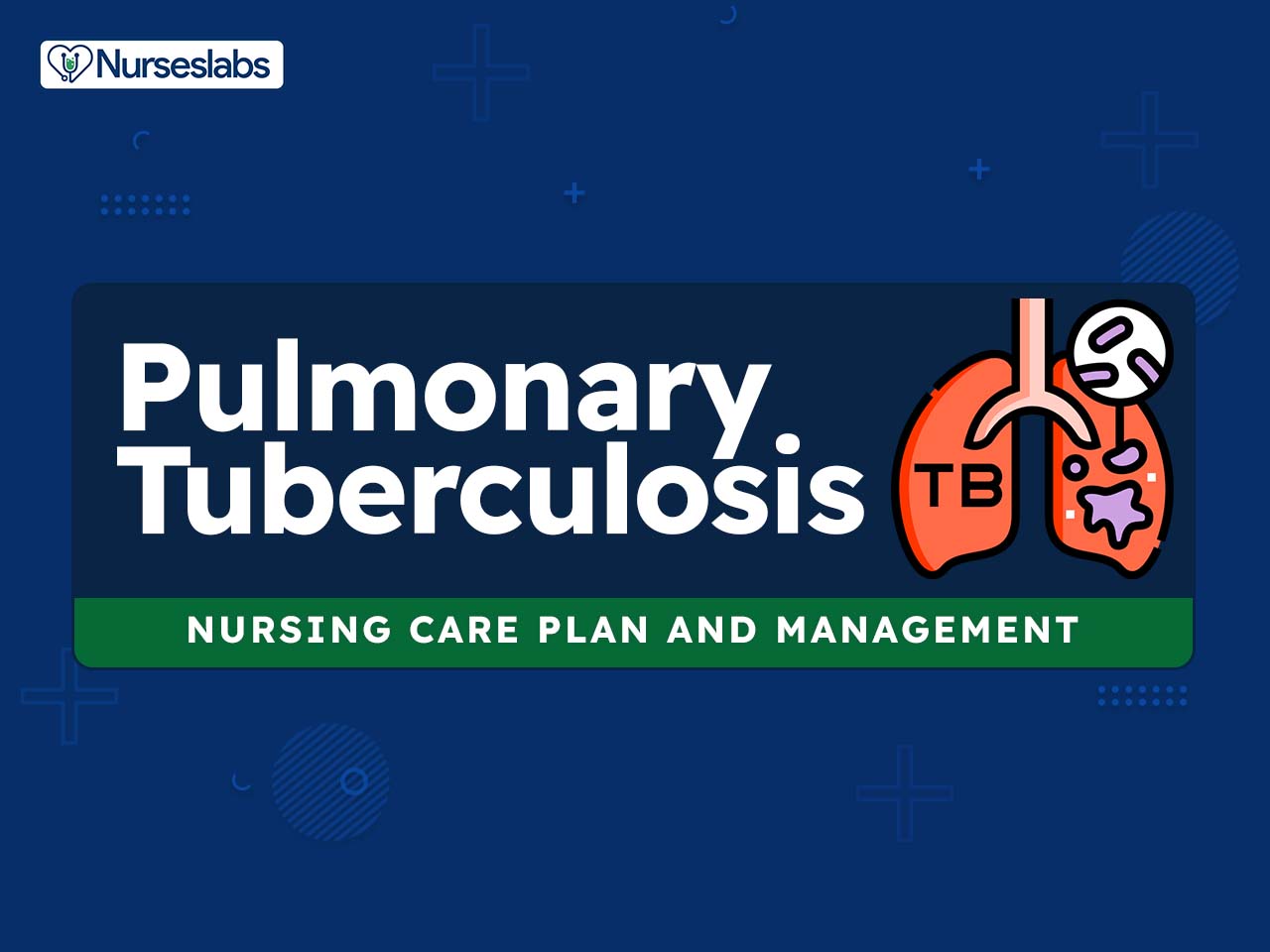

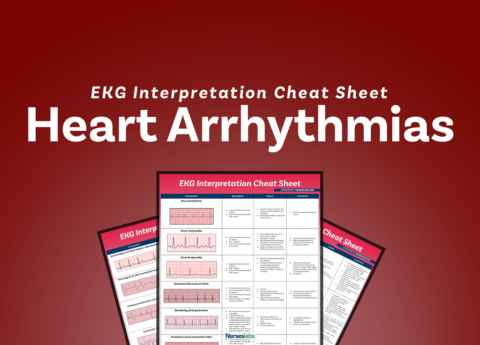


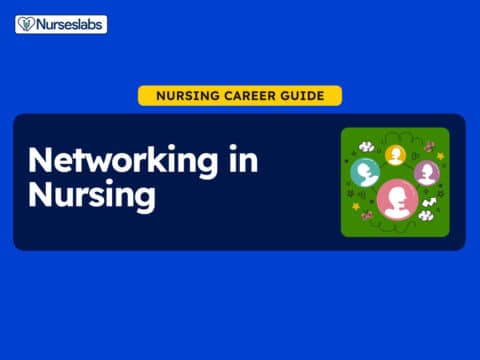



















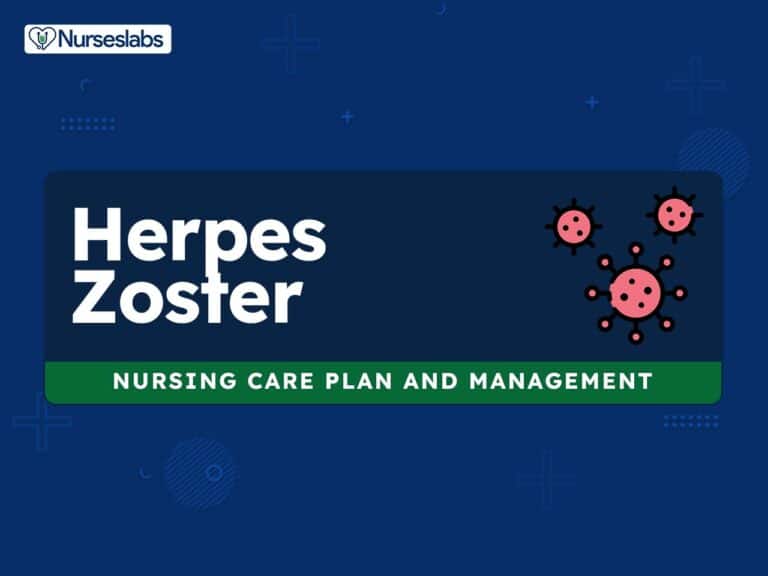
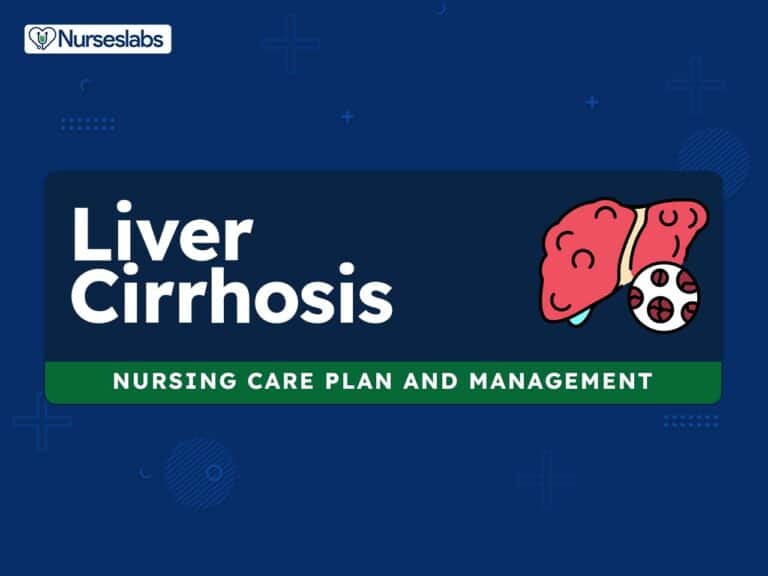
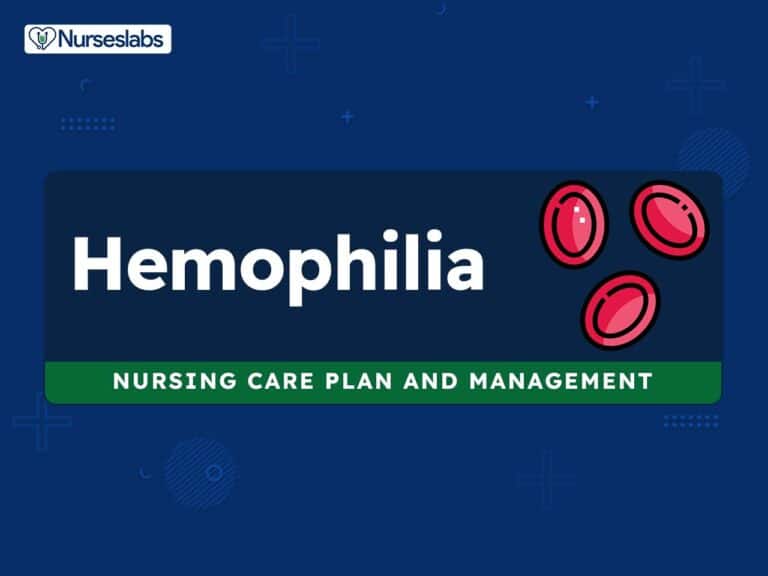
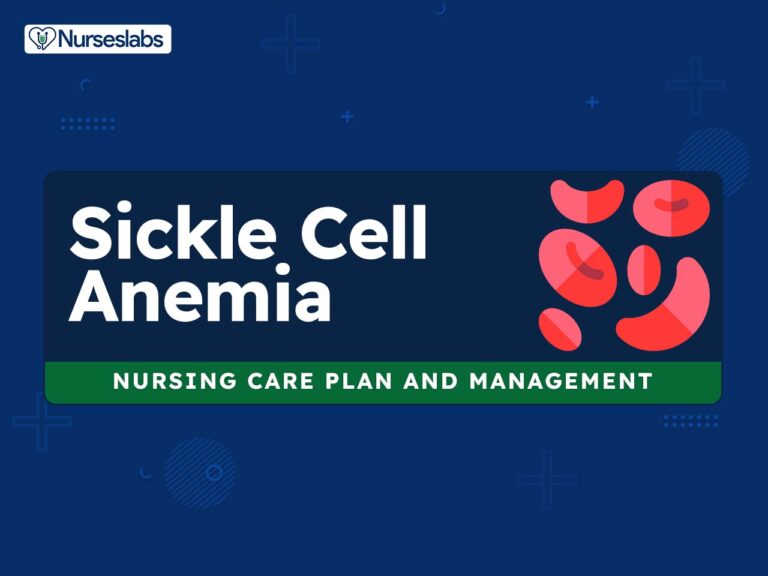

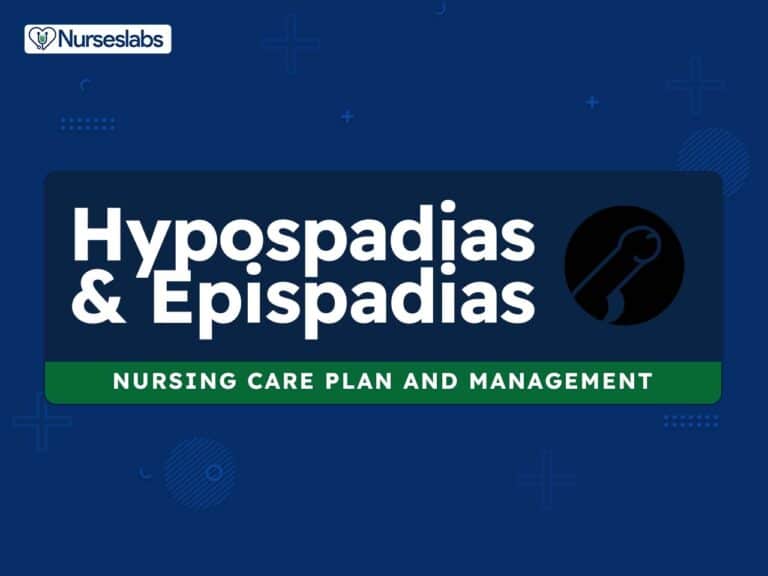


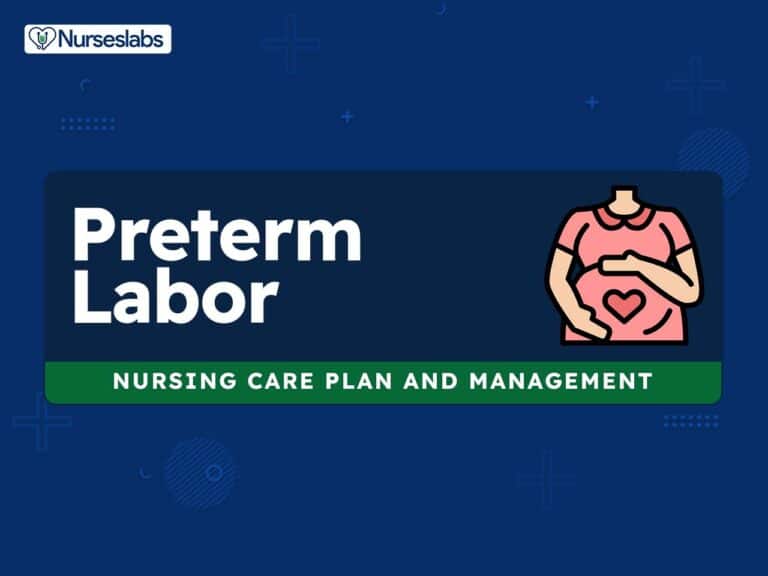
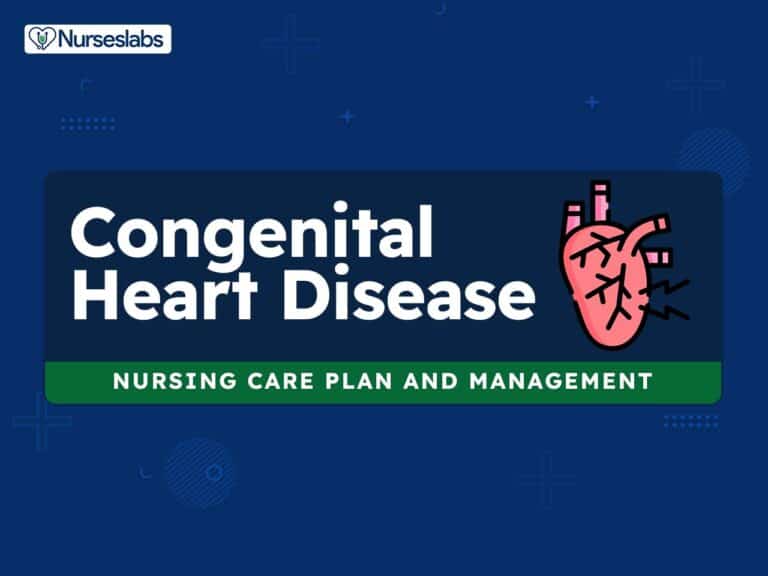
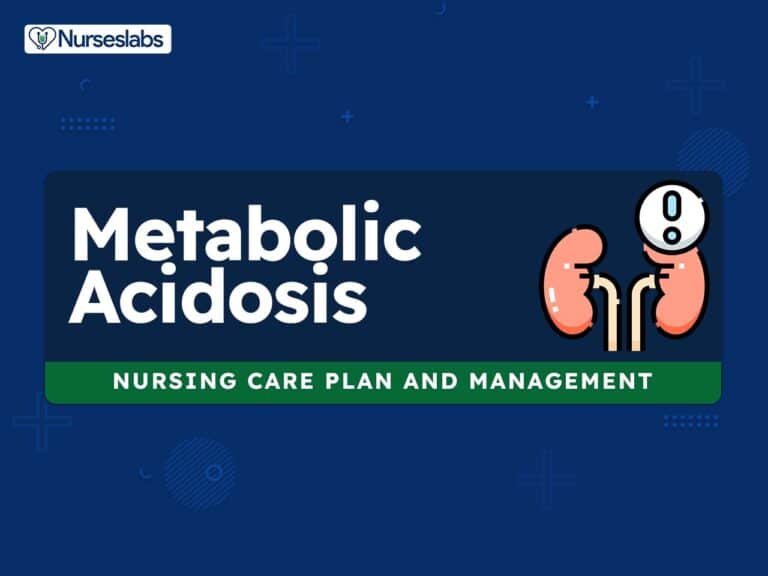
Leave a Comment